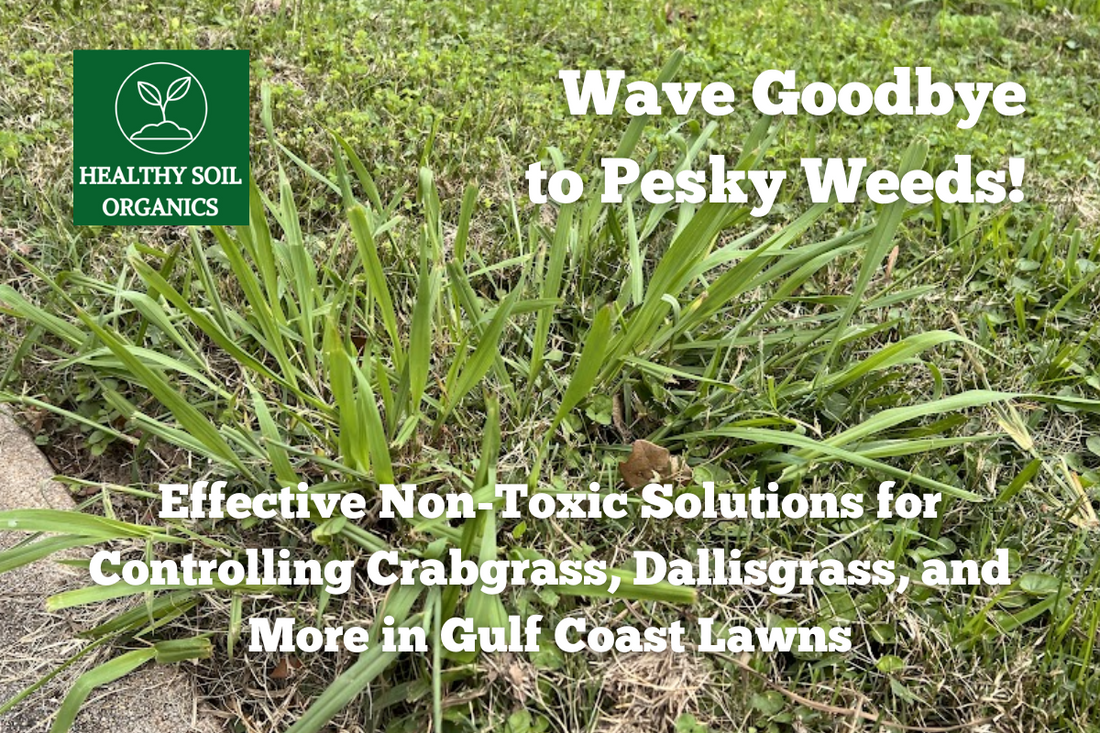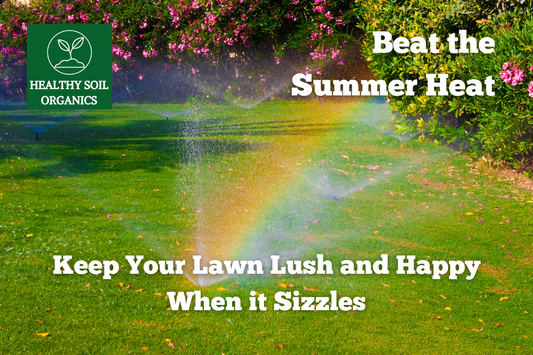
Wave Goodbye to Pesky Weeds! Effective Non-Toxic Solutions for Controlling Crabgrass, Dallisgrass, and More in Gulf Coast Lawns
Jason OstermayerShare
Hello, fellow lawn enthusiasts! If you're like me, you love a lush, green lawn but hate those pesky grassy weeds that seem to have taken up permanent residence. Here along the Gulf Coast, we deal with more than our fair share of these stubborn invaders, like crabgrass and dallisgrass. But fear not! I've got a fantastic, non-toxic method to get rid of these persistent pests without risking your health or harming your beloved lawn.
The Perils of Persistent Weeds
While some seasonal weeds might disappear on their own, many grassy weeds are more resilient. Crabgrass and dallisgrass can be particularly pesky, refusing to go away even as the seasons change. These weeds not only spoil the look of your lawn but can also outcompete your grass for nutrients and water.
A Safe, Non-Toxic Solution: Soapy Water and Baking Soda
Forget about those harsh, toxic herbicides! I've discovered a simple, effective, and safe method using just soapy water and baking soda. This approach is perfect for homeowners of all ages who want a beautiful lawn without the hassle and health risks associated with chemical weed killers.
Here’s What You’ll Need:
- Plain Dish soap (Not the anti-bacterial kind please!)
- Water
- Baking soda
- A Watering can
- A bit of patience and a dash of persistence
Step-by-Step Guide
- Mix Your Soapy Water: Combine 2-3 tablespoons of plain inexpensive dish soap per gallon of water in a watering can. The soap helps the baking soda stick to the weeds, making it more effective.
- Soak the Weeds: Thoroughly wet the targeted grassy weeds with your soapy water mixture. Make sure they're drenched, so the baking soda has something to cling to.
- Dust with Baking Soda: Generously sprinkle baking soda over the wetted weeds. Focus on the weeds themselves and try to avoid getting too much on the surrounding grass.
- Watch the Magic Happen: Now, sit back and relax. You'll start to see results quickly. Within 24 hours, you'll notice the weeds beginning to shrivel and die.
- Monitor and Maintain: After a week, give your lawn a good mow to remove the dead weeds. Keep an eye out for any stubborn survivors and repeat the process if necessary.
My Experience: Dallisgrass Be Gone!
Let me share a personal story to illustrate just how effective this method can be. I had a particularly stubborn patch of dallisgrass in my lawn that had been growing for over a year. I documented the entire process with photos:
- Before: A healthy, albeit unwelcome, patch of dallisgrass.

- Application: Thoroughly wetted with soapy water and dusted with baking soda.

- 24 Hours Later: The dallisgrass started to look wilted and lifeless.

- One Week Later: After a mow, the area was clear of the persistent weeds!

- Three Weeks Later: The lawn is already recovering and turning back to green. There's no long term damage done here.
Tips for Success
- Be Consistent: Some weeds may be more stubborn than others. Regular applications may be necessary for particularly tough patches.
- Protect Your Grass: Try to keep the baking soda concentrated on the weeds to avoid affecting the surrounding grass.
- Stay Vigilant: Keep an eye on your lawn and reapply as needed to keep those pesky weeds at bay.
A Greener, Healthier Lawn
Using soapy water and baking soda is a fantastic, eco-friendly way to tackle persistent grassy weeds. It’s safe for you, your family, and your pets, and it helps keep your lawn looking its best. So next time you spot those unwelcome guests in your grass, grab your soapy water and baking soda and show them who's boss!
Happy gardening, and here's to a weed-free, beautiful lawn!



